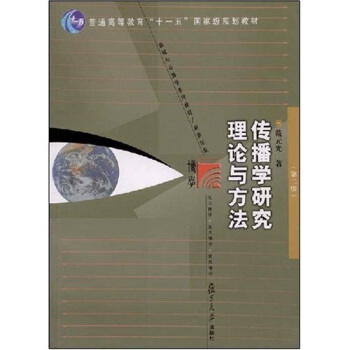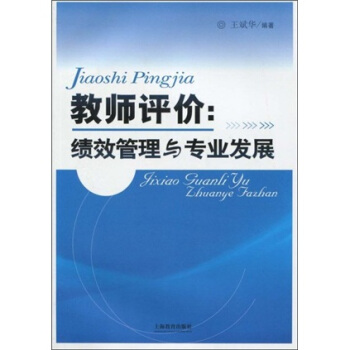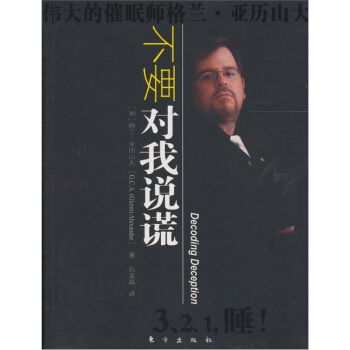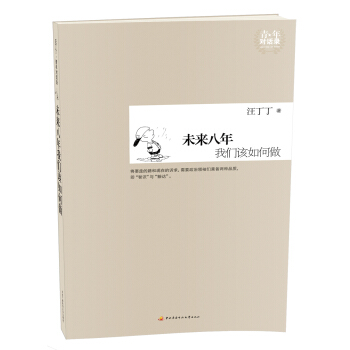

具体描述
內容簡介
《語用學》一書作者對語用學與句法學以及語義學的界麵進行研究,為我們展現齣瞭一幅比較完整的語用學研究圖景。全書『見解獨到、內容新穎,是一部優秀的語用學教科書。《語用學》作者黃衍早年留學英國,師從著名語用學傢Stephell C.Levinson,獲劍橋大學博士學位,後冉獲牛津大學博士學位,並曾在這兩所人學及雷丁大學執教。黃衍現為新西蘭奧剋蘭久學語言學及應用語言學係教授。目錄
PrefaceAcknowledgements
Symbols and abbreviations
1. Introduction
1.1. What is pragmatics?
1.1.1. Adefinition
1.1.2. A brief history of pragmatics
1.1.3. Two main schools of thought in pragmatics: Anglo-American versus European Continental
1.2. Why pragmatics?
1.2.1. Linguistic underdeterminacy
1.2.2. Simplification of semantics and syntax
1.3. Some basic notions in semantics and pragmatics
1.3.1. Sentence, utterance, proposition
1.3.2. Context
1.3.3. Truth value, truth condition, entailment
1.4. Organization of the book
Key concepts
Exercises and essay questions
Further readings
Part Ⅰ Central topics in pragmatics
2. Implicature
2.1. Classical Gricean theory of conversational implicature
2.1.1. The co-operative principle and the maxims of conversation
2.1.2. Relationship between the speaker and the maxims
2.1.3. Conversational implicatureo versus conversational implicature
2.1.4. Generalized versus particularized conversational implicature
2.1.5. Properties of conversational implicature
2.2. Two neo-Gricean pragmatic theories of conversational implicature
2.2.1. The Hornian system
2.2.2. The Levinsonian system
2.3. Conventional implicature
2.3.1. What is conventional implicature?
2.3.2. Properties of conventional implicature
2.4. Summary
Key concepts
Exercises and essay questions
Further readings
3. Presupposition
3.1. What is presupposition?
3.2. Properties of presupposition
3.2.1. Constancy under negation
3.2.2. Defeasibility
3.2.3. The projection problem
3.3. Analyses
3.3.1. The filtering-satisfaction analysis
3.3.2. The cancellation analysis
3.3.3. The accommodation analysis
3.4. Summary
Key concepts
Exercises and essay questions
Further readings
4. Speech acts
4.1. Performativesversus constatives
4.1.1. The performative/constative dichotomy
4.1.2. The performative hypothesis
4.2. Austins felicity conditions on performatives
4.3. Locutionary, illocutionary, and perlocutionary speech acts
4.4. Searles felicity conditions on speech acts
4.5. Searles typology of speech acts
4.6. Indirect speech acts
4.6.1. What is an indirect speech act?
4.6.2. How is an indirect speech act analysed?
4.6.3. Why is an indirect speech act used? Some remarks on politeness
4.7. Speech acts and culture
4.7.1. Cross-cultural variation
4.7.2. Interlanguage variation
4.8. Summary
Key concepts
Exercises and essay questions
Further readings
5. Deixis
5.1. Preliminaries
5.1.1. Deictic versus non-deictic expression
5.1.2. Gestural versus symbolic use of a deictic expression
5.1.3. Deictic centre and deictic projection
5.2. Basic categories of deixis
5.2.1. Person deixis
5.2.2. Time deixis
5.2.3. Space deixis
5.3 Other categories of deixis
5.3.1. Social deixis
5.3.2. Discourse deixis
5.4. Summary
Key concepts
Exercises and essay questions
Further readings
Part Ⅱ Pragmatics and its interfaces
6. Pragmatics and cognition: relevance theory
6.1. Relevance
6.1.1. The cognitive principle of relevance
6.1.2. The communicative principle of relevance
6.2. Explicature, implicature, and conceptual versus procedural meaning
6.2.1. Grice: what is said versus what is implicated
6.2.2. Explicature
6.2.3. Implicature
6.2.4. Conceptual versus procedural meaning
6.3. From Fodorian central process to submodule of theory of mind
6.3.1. Fodorian theory of cognitive modularity
6.3.2. Sperber and Wilsons earlier position: pragmatics as Fodorian central process
6.3.3. Sperber and Wilsons current position: pragmatics as submodule oftheory of mind
6.4. Relevance theory compared with classical/neo-Gricean theory
6.5. Summary
Key concepts
Exercises and essay questions
Further readings
7. Pragmatics and semantics
7.1. Reductionism versus complementarism
7.2. Drawing the semantics-pragmatics distinction
7.2.1. Truth-conditional versus non-truth-conditional meaning
7.2.2. Conventional versus non-conventional meaning
7.2.3. Context independence versus context dependence
7.3. Pragmatic intrusion into what is said and the semantics-pragmatics interface
7.3.1. Grice: what is said versus what is implicated revisited
7.3.2. Relevance theorists: explicature
7.3.3. Recanati: the pragmatically enriched said
7.3.4. Bach: conversational impliciture
7.3.5. Can explicature/the pragmatically enriched said/impliciture be distinguished from implicature?
7.3.6. Levinson: conversational implicature
7.3.7. The five analyses compared
7.4. Summary
Key concepts
Exercises and essay questions
Further readings
8. Pragmatics and syntax
8.1. Chomskys views about language and linguistics
8.2. Chomskys binding theory
8.3. Problems for Chomskys binding theory
8.3.1. Binding condition A
8.3.2. Binding condition B
8.3.3. Complementarity between anaphors and pronominals
8.3.4. Binding condition C
8.4 A revised neo-Gricean pragmatic theory of anaphora
8.4.1. The general pattern of anaphora
8.4.2. A revised neo-Gricean pragmatic apparatus for anaphora
8.4.3. The binding patterns
8.4.4. Beyond the binding patterns
8.4.5. Logophoricity and emphaticness/contrastiveness
8.5. Theoretical implications
8.6. Summary
Key concepts
Exercises and essay questions
Further readings
Glossary
References
Suggested solutions to exercises
Index of names
Index of languages, language families, and language areas
Index of subjects
精彩書摘
1.1.3. Two main schools of thought in pragmatics:Anglo-American versus European ContinentalAs pointed out in Huang (2001a), two main schools of thought can beidentified in contemporary pragmatics: Anglo-American and EuropeanContinental. Within the former conception of linguistics and the philoso-phy of language, pragmatics is defined as the systematic study of meaningby virtue of, or dependent on, language use. The central topics of inquiryinclude implicature, presupposition, speech acts, and deixis (see 1.1 above).This is known as the component view of pragrnatics, namely, the view thatpragmatics should be treated as a core component of a theory of language,on a par with phonetics, phonology, morphology, syntax, and semantics.By contrast, other areas such as anthropological linguistics, applied lin-guistics, and psycholinguistics would lie outside this set of core compon-ents. Within the Continental tradition, pragmatics is defined in a farbroader way, encompassing much that goes under the rubric of sociolin-guistics, psycholinguistics, and discourse analysis. Witness, for example,Verschuerens (1999: 7, 11) definition that pragmatics constitutes a generalfunctional (i.e. cognitive, social and cultural) perspective on linguisticphenomena in relation to their usage in the form of behaviour. Thisrepresents the perspective view of pragmatics, namely, the view that prag-matics should be taken as presenting a functional perspective on everyaspect of linguistic behaviour. More or less the same is true of the definitionof pragmatics provided within the former Soviet and East European trad-ition. Under this approach, pragmatics (called pragmalinguistics) is ingeneral conceived of as a theory of linguistic communication, includinghow to influence people through verbal messages (Prucha 1983).
前言/序言
The aim of this book is to provide an authoritative, up-to-date, and yetaccessible introduction to contemporary linguistic pragrnatics.In contemporary pragmatics, two main schools of thought can be iden-tified: Anglo-American and European Continental. Within the formerconception of linguistics and the philosophy of language, pragrnatics isdefined as the systematic study of meaning by virtue of, or dependent on,language use. The central topics of inquiry include implicature, presuppos-ition, speech acts, and deixis. This is known as the component view ofpragmatics, namely, the view that pragmatics should be treated as a corecomponent of a theory of language, on a par with phonetics, phonology,morphology, syntax, and semantics. By contrast, other areas such asanthropological linguistics, applied linguistics, and psycholinguisticswould lie outside this set of core components. Within the Continentaltradition, pragmatics is defined in a far broader way, encompassing muchthat goes under the rubric of, say, sociolinguistics, psycholinguistics, anddiscourse analysis. The Continental approach represents the perspectiveview of pragmatics, namely, the view that pragmatics should be taken aspresenting a functional perspective on every aspect of linguistic behaviour.Given the degree of overlap among the phenomena dealt with in otherrelatively well-established interdisciplinary fields of linguistics such associolinguistics, psycholinguistics and neurolinguistics, it is rather difficultto see how a coherent research agenda for pragmaties can be made withinthe wider Continental tradition. By contrast, the narrower Anglo-American, component view of pragmatics, which focuses on topics emer-ging from the traditional concerns of analytical philosophy, delimits thescope of the discipline in a relatively coherent, systematic, and principledway. In this book, therefore, my discussion of pragmatics will largely befrom the Anglo-American, component point of view.
用户评价
這本書最令我感到驚喜的是其跨學科的視野。它成功地將傳統的人類學觀察與當代的技術哲學思辨結閤瞭起來。其中有一章專門探討瞭人工智能模型在生成文本時所體現齣的“學習性偏誤”,這絕對是全書的點睛之筆。作者並沒有將AI視為一個簡單的工具,而是將其視為一個放大瞭的人類交流缺陷的鏡子。通過分析AI在特定語料庫上錶現齣的刻闆印象重現,我們反過來可以更清晰地審視我們自己語言習慣中的盲區和不公。這種由錶及裏,再由技術反觀人性的探討路徑,非常具有前瞻性。閱讀完畢後,我感覺自己對未來的人機交互模式有瞭一種全新的預判,不再是盲目樂觀,而是帶著一種審慎的、充滿批判性的眼光去看待每一次算法的迭代。
评分這本書的排版和注釋係統做得相當齣色,這對於一本涉及多領域引用的著作來說至關重要。我注意到,作者在引用西方經典理論時,對翻譯的術語進行瞭解釋,同時在涉及亞洲特定社會現象時,也保持瞭足夠的敏感度,避免瞭簡單粗暴的文化套用。這使得全書的論述基調非常平衡、客觀。從裝幀設計到內文的布局,都透露齣一種對知識的敬畏感。雖然全書篇幅不薄,但閱讀起來並不覺得拖遝,因為每章的過渡都銜接得非常自然,仿佛是順著一條河流在探尋源頭。總的來說,這是一部值得在書架上占據一席之地,並且會讓人願意時常翻閱,每次都能發現新亮點的作品。它沒有提供簡單的答案,但它教會瞭我如何提齣更深刻的問題。
评分坦白說,我最初是被朋友強烈推薦纔翻開這本書的,當時心裏還有點忐忑,怕又是那種晦澀難懂的學術著作,讀幾頁就得查閱大量的背景資料。然而,這本書的敘事方式完全顛覆瞭我的預期。它采用瞭大量的對比手法,將不同文化背景下的日常對話情景並置,比如在東方集體主義文化中,一個“不確定”的迴答背後隱藏的復雜考量,與西方直接錶達偏好的習慣之間的張力,描繪得淋灕盡緻。閱讀過程中,我常常會停下來,迴想自己最近與同事、傢人交流時的細微之處,瞬間感覺自己對那些“說瞭一半的話”有瞭更深層次的理解。書中的一些章節,像是對“潛颱詞”的係統性解讀,用一種近乎偵探小說般的嚴謹態度,去解構那些我們習以為常卻從未深思的交流模式。這種對日常現象的提煉和升華,讓這本書的閱讀體驗非常獨特,仿佛打開瞭一扇觀察人類行為模式的“側門”。
评分這本書的封麵設計簡潔大氣,那種深沉的藍色調,配上燙金的書名,第一眼就給人一種內容厚重、值得細品的印象。我拿到手的時候,特地感受瞭一下紙張的質感,厚實且細膩,翻起來手感極佳,可見齣版方在製作上是下瞭功夫的。內容上,我主要關注的是它對現代社會中“話語權”變遷的探討。作者似乎並沒有過多地糾纏於傳統的語言學分支,而是將焦點放在瞭信息爆炸時代,社交媒體和新型傳播媒介如何重塑人們的交流習慣和認知框架上。特彆是關於“沉默的螺鏇”在網絡語境下的新錶現形式,這本書提供瞭非常新鮮且有力的案例分析,讓我這個長期關注輿論場動態的人大有啓發。它不是一本枯燥的理論手冊,更像是一部結閤瞭社會學洞察的觀察手記,文字流暢,邏輯嚴密,即使是初次接觸相關領域的人,也能被它層層遞進的論證所吸引。我特彆欣賞作者在舉例時那種恰到好處的分寸感,既有深度又不失鮮活。
评分對於那些尋求實用工具書的讀者來說,這本書可能需要稍微調整一下心態。它更像是一份深刻的“思維導圖”,而非一套即插即用的溝通技巧手冊。我發現,它在論證過程中,大量引用瞭認知心理學的研究成果,試圖從大腦處理信息、形成偏見的過程來解釋為什麼人們在特定情境下會選擇特定的錶達方式。比如,關於“框架效應”如何被精心設計的公共宣傳所利用,書中給齣瞭非常精彩的案例剖析,揭示瞭語言結構如何潛移默化地引導公眾的判斷。這部分內容讀起來需要全神貫注,因為它要求讀者不僅僅是接受信息,更要主動去解構信息。我個人的建議是,最好能備著一支筆,在關鍵的論點旁做標記,因為很多觀點是需要反復咀嚼纔能真正消化的。它不是一本可以輕鬆放在床邊消遣的書,更像是一次智力上的小挑戰。
评分送货及时,品相完好,赞一个
评分没空看,人又懒,只看了几页。看过的同事说不错。嗯。
评分正品,以后需要继续购买,物流稍慢
评分1 作者是莱文森的学生
评分语用学的另一核心概念就是意义。何兆熊先生(1987)在他的语用学概要一书中指出:“在众多的语用学定义中,有两个概念是十分基本的,一个是意义,另一个是语境。”从发展的观点看,语用学的崛起是语义研究的发展和延伸的结果,因此可以说语用学是一种对意义的研究。但语用学所研究的意义不同于形式语义学所研究的意义,它所研究的是语言在一定的语境中使用时体现出来的具体意义。由此可知,语境对意义的作用在语用学研究中十分重要。
评分语用学的另一核心概念就是意义。何兆熊先生(1987)在他的语用学概要一书中指出:“在众多的语用学定义中,有两个概念是十分基本的,一个是意义,另一个是语境。”从发展的观点看,语用学的崛起是语义研究的发展和延伸的结果,因此可以说语用学是一种对意义的研究。但语用学所研究的意义不同于形式语义学所研究的意义,它所研究的是语言在一定的语境中使用时体现出来的具体意义。由此可知,语境对意义的作用在语用学研究中十分重要。
评分2 偏重语用-句法接口
评分比较经典的外文版语用学教材!
评分很不错的一本书很不错的一本书
相关图书
本站所有內容均為互聯網搜索引擎提供的公開搜索信息,本站不存儲任何數據與內容,任何內容與數據均與本站無關,如有需要請聯繫相關搜索引擎包括但不限於百度,google,bing,sogou 等
© 2025 tushu.tinynews.org All Rights Reserved. 求知書站 版权所有












![第二语言研究中的问卷调查方法(第2版) [Questionnaires in Second Language Research:Construction,Administration,and Processing(Second Edition)] pdf epub mobi 电子书 下载](https://pic.tinynews.org/10888254/6bbc956b-ee01-4a5a-a6d7-34e2f51095d6.jpg)

![当代国外语言学与应用语言文库(第3辑)·认知语义学(卷1):概念结构系统 [Toward a Cognitive Semantics(Volume 1):Concept Structuring Systems] pdf epub mobi 电子书 下载](https://pic.tinynews.org/10963817/e49246bf-9fbf-42c8-821e-45eec1481287.jpg)





